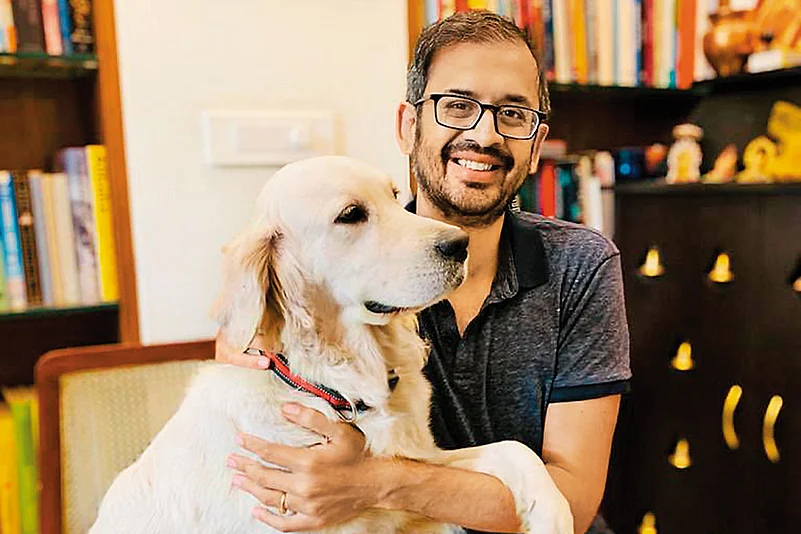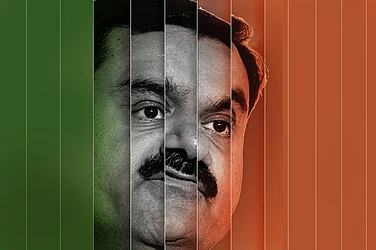Since launching Mensa Brands in May 2021, founder Ananth Narayanan has acquired 25 digital-first entities under the company’s aegis. Within the first month of operations, the ex-Myntra CEO raised $50 million in a Series A funding round from Accel Partners, Falcon Edge Capital and Norwest Venture Partners for the ecommerce rollup entity.
Within six months, he followed this up with an additional $135 million in another capital raise at over a $1 billion valuation, led by existing investor Falcon Edge Capital, along with other existing investors like Accel Partners, Norwest, Tiger Global Management, and the participation of Prosus (Naspers). This gave Mensa the lofty status of the “fastest Indian start-up” to gain unicorn status.
Now, Narayanan has trained his sights on the omnichannel route to scale up a few of its acquired D2C companies so that Mensa becomes a true house of brands rather than one building labels.
Edited excerpts:
How has the global funding gloom impacted you? Where is the focus of investors: overall profitability or unit economics? Will the overall dismal funding scenario impact further acquisitions or partnerships?
Our no-burn profitable business model, coupled with a well-capitalised balance sheet, puts us in a fortunate position with the macro slowdown. Investors are more focused on sustainable growth with a clear path to profitability.
However, even before this shift, we built a business model and technology stack to help us to grow our brands with a positive EBITDA, even during the first two years of operation. We will continue to acquire assets that are accretive to our portfolio.
The shift in our strategy is to acquire fewer but larger brands that exhibit growth potential. We acquired companies with a run rate of less than Rs 50 crore.
Now we focus on brands with an annual run rate (ARR) of Rs 50 crore to Rs 200 crore as our overall portfolio has seen sizable growth.
Mensa Brands posted a net loss of Rs 96.62 crore in FY22, with total expenses at Rs 315.44 crore during the year, pushing the company in the red. What are your plans to turn profitable?
In the first year of operations, we registered Rs 320 crore in revenues. Also, the net loss includes amortisation, since we buy large assets. When you buy a company, you amortise the value of that company over four years, which is not a cash loss. At the brand level, we have been EBITDA profitable since year one and we will break even at the corporate level this year.
What were some key learnings in implementing an ecommerce rollup model in India?
We are trying to build a tech-led house of brands at Mensa, a concept different from an ecommerce aggregator on the lines of a digital Unilever, Inditex or Aditya Birla entity. The best analogy here is buying half-finished buildings with good foundations and then developing them. However, this makes scaling up difficult since one needs technology, the right talent, and brand and product-building expertise.
We have chosen categories like fashion, beauty, home and FMCG, where the stock-keeping units (SKUs) keep changing, and one must focus on brand building. It has been a good year and we now have 25 brands in our portfolio. We currently have four brands in the omnichannel space and might add two more.
What is the reason behind the omnichannel push?
You need an omnichannel strategy to succeed in India. An online brand will do well until it reaches Rs 70 crore to Rs 100 crore in revenues, after which it requires an omnichannel presence. We are approaching this in a tech-led manner, which means leveraging data to understand how to place products in areas that generate the maximum number of orders.
We are also creating more transparency around the actual end sales through tech. Since most companies rely on the distribution model, they only know about primary sales. We track primary, secondary and sometimes tertiary sales.
As part of our tech-led business model, our sales force uses an app to record sales, which creates actual execution ability to place the product where it is needed and focus on geographies that matter. This ensures that the effort-to-result ratio is excellent.
Moreover, technology helps us to have a seamless customer experience across ecommerce and offline platforms. Four of our brands—smart wearable brand Pebble, beauty brand Villain, MyFitness, which offers peanut butter products, and fashion brand Dennis Lingo—are doing exciting work around this.
Please elaborate.
We are ensuring that we have online and offline experiences in Pebble. While it is distributed through modern trade, we also go to local electronics hubs in prominent cities, based on data research. We have also developed software to track primary sales to our distributors and downstream to the retailer so that we can replenish the inventory without burdening the channel.
Pebble’s business grew by 220% last year, while the industry grew around 80% to 100%. And we went from a #8 player when we bought the brand to a #4 player.
Villain, too, grew two and a half times from the time we bought it in 2021, and almost 30% of the sales come from the offline channel. While it is a fragrance brand, we plan to launch personal care products under it this year.
Dennis Lingo is more extensive than most offline brands in the online world, with a 10% to 15% market share on major ecommerce platforms. It has grown 6x from when we bought it in 2021. We are now opening an exclusive business outlet (EBO) in Mumbai and will also start doing multi-brand outlets (MBO) for this brand.
Many brands you partnered with are from sectors with well-funded start-ups already. Some have even achieved unicorn status and are exploring the omnichannel approach like you are. What strategy will you use to take on the well-funded biggies?
Firstly, we are not operating in a ‘winner-takes-all’ market and several large brands will emerge over the next five to 10 years. A big vacuum in fashion, beauty and home brands exists in India—a more than $120 billion market, and over 80% of it is unbranded. Plus, as the GDP increases, the need for meaningful and purposeful brands with a strong community has become increasingly important to the Indian consumer.
Secondly, our strategy continues to focus on building $100 million powerful brands sustainably, driven by our tech-growth playbook. We continue building long-term capabilities around new product development, pricing, inventory management and brand building. We also remain focused on an omnichannel approach to accelerate brand growth and recognition.
Once you bring a brand under Mensa’s umbrella, how does the brand founder’s role change and how much of strategic decision-making does Mensa control?
In the past two years, we have collaborated with founders with a vision to build their brands as household names and who understand that Mensa’s technology and expertise can help them achieve this goal. During our deal process, we align with founders on their roles—based on both their expertise and interest. Some specialise in sourcing and design, while others have channel expertise. Working together as a team, we develop strategies with the common goal of building an at-scale consumer-loved brand.
How do you identify which brand has reached the scale to go omnichannel?
Firstly, we check if the brand has at least Rs 70 crore ARR otherwise, the investment in its offline initiatives becomes too high and complicated. Secondly, some brands have a more touch-and-feel need where sampling makes a difference, for e.g., MyFitness.
Thirdly, the offline strategy—whether to do general or modern trade or have your own outlets and where to sell—depends on the category and not just the brand.
In the case of fashion brands, the right way to scale is by having a few EBOs and a franchisee model, while in beauty and FMCG, general trade and larger food chains are apt. We also need to ensure that we are using the right tech tools.
How do you de-risk your offline endeavours?
We tinker with one- to three-year timeframes because offline sticks longer instead of jumping all in. We open one outlet, make it successful and open another only after ensuring that the proof of concept works.
To de-risk it slightly, we build tech into the plans. The level of investment also varies. Since general trade primarily has people and variable pay, the investment is lower, and one can scale faster. Investment is higher in EBOs, while modern trade is somewhere in between. We spend a lot of time getting the right mix.
For instance, we chose not to create our own stores for Villain as the brand needed more assortment. Instead, we decided to be present in department and beauty stores, and today, this is one of our more profitable channels.
We also look at the brand from a marketing perspective. Since Dennis Lingo grew by 6x, it has a branding budget. Moreover, an EBO fits this brand as people can experience it in a mall alongside the face of its brand ambassador, actor Ali Fazal.
Why did you pick the FMCG, fashion, beauty and home décor sectors and steer clear of other segments like electronics?
We decided to get into more utilitarian sectors as building brands in lifestyle categories is easier. Since they are also high-growth margin businesses, the ability to make money and profitability is much higher in this category. These are large markets; put together, they are northwards of $100 billion, which means there is no problem with TAM (total addressable market). Moreover, the average consumer in these categories is similar—20 to 30-year-old ecommerce savvy customers.
Besides, I know fashion and beauty well due to my prior experiences. So, picking areas where you know something about always helps in increasing the chances of success.
As the number of companies in your portfolio grows, is it not challenging to decide how to help each of them achieve EBITDA profitability individually and grow their ARR?
That is (at) the heart of what we do. We create central capabilities that can be leveraged across operational areas, like inventory management, warehousing and logistics, which are common across all 25 brands. Similarly, how we think of performance marketing is consistent; or adopting a tech-led process to determine the average selling price. These do not increase linearly with brands; we build a core set of four to five people across the brands we add. Lastly, we centralise category operations from cataloging to photoshoots, which allows us to grow in scale.
Will Mensa open its own brand of physical outlets?
We keep debating because it makes sense, just like Zudio did. But it is not on the cards this year.
How successful have you been in taking Indian brands to global markets and what are some specific trends visible in terms of revenue or geographical reach?
Our vision at Mensa is to build global tech-led brands from India. With this goal in mind, we sell several brands in international markets. Right now, our focus geographies are the US and the Middle East.
In the US, we have seen immense success for our home brands, owing to a combination of our strong sourcing network, optimised global supply chain and a data-driven tech stalk to develop new products for and market to the American consumer. We also see an immense opportunity in the Middle East for a variety of our brands, including fashion (like Dennis Lingo), wearables (Pebble) and beauty (Villain) as the region has a large Indian diaspora and a growing consumer base.
We will continue to grow our global reach and build brands from India worldwide.





















